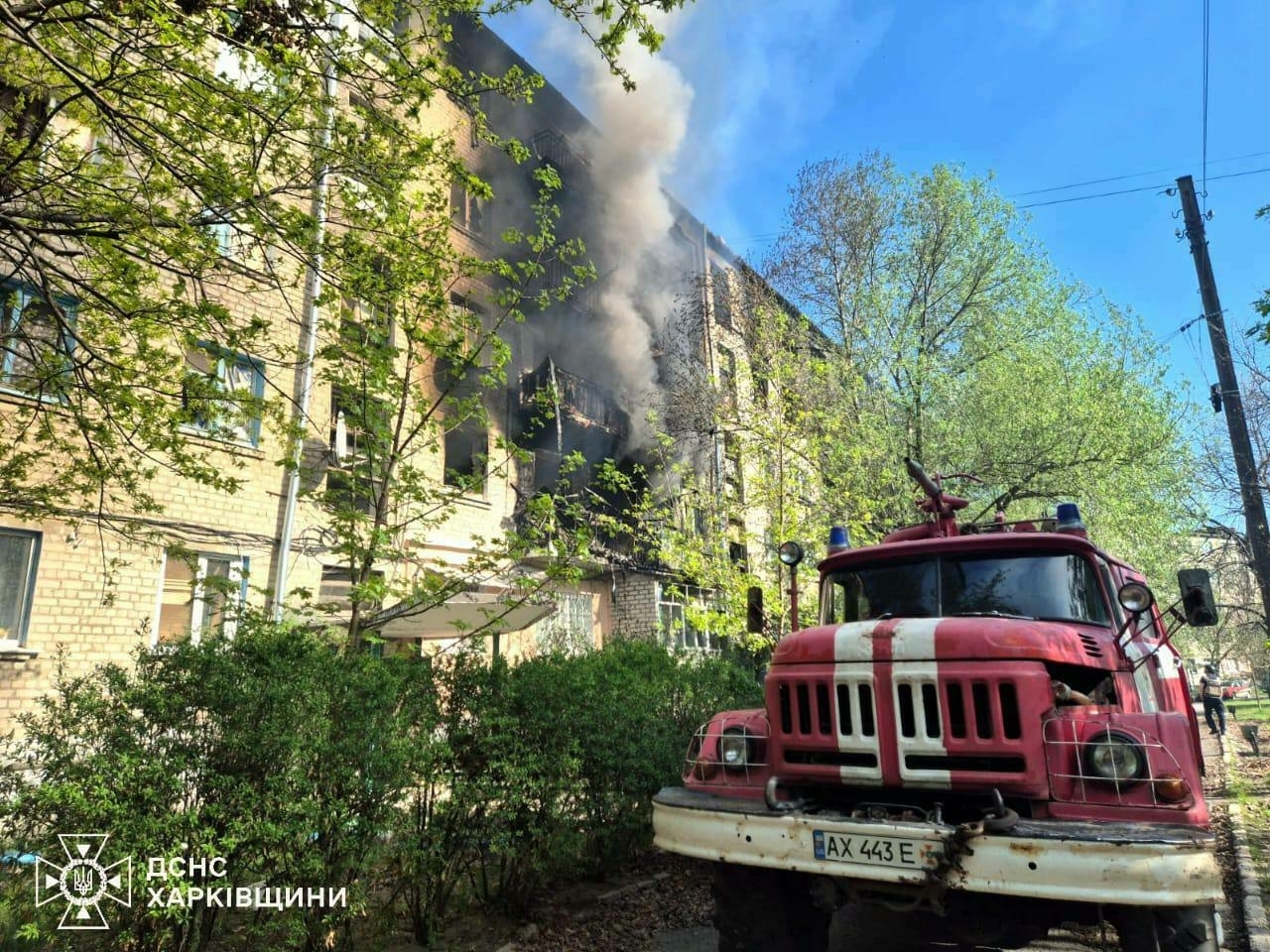
UKRAINE, KHARKIV OBLAST, Apr 21 — During the "Easter ceasefire," the Russian army continued the attacks in Kharkiv Oblast, reported Ukraine's officials and military. Gwara Media talked to several brigades, stationed in different sections of the frontline in the region, to find out about their experience during so-called truce.
On the eve of Easter, Russian President Vladimir Putin announced that the Russian side would cease all hostilities from 6:00 p.m. on April 19 to 00:00 on April 21.
Ukraine's President Volodymyr Zelenskyy responded to Putin's statement, calling it another attempt to “play with the lives of people.” After midnight of April 22, he reported that Russia violated its own “Easter ceasefire” 2,935 times for the past day.
As an example, on Easter afternoon, Russians attacked a five-story residential building with an unmanned aerial vehicle (UAV) in Kivsharivka village of the Kupiansk district, setting fire to 36 apartments, reported the local State Emergency Service.

During the timeframe of the "ceasefire," Zelensky said that Ukrainian troops would mirror Russia's actions—open fire after being attacked.
Viktor Trehubov, the speaker of the “Khortytsia” operational-strategic group of forces that covers part of the Kharkiv Oblast, said to “Suspilne” that the “ceasefire” seemed more like a “smoke break.”
“Russian maneuvers look like assaults under the white flag. It seems they really want to trigger a visual attack so that we think they are assaulting to make us attack them back,” said Trehubov.
Responding to Gwara Media, Trehubov added, “No one (from our military) counted on anything, we’ve seen these “ceasefires” many times (since 2014). We didn’t conduct any assaults on Easter but responded to Russian attack attempts.”
Kharkiv axis
The 13th National Guard Brigade, “Khartia,” is stationed near Lyptsi, a village north of Kharkiv, about 6 miles (10 kilometers) from the Russian border.
Volodymyr Diehtiarov, the brigade’s spokesperson, said that while Russian troops refrained from attacking from artillery, they used drones to attack the positions of Ukrainian forces during the "ceasefire." They also used 30 hours to accumulate more of their forces, he said.
Russians did so on other sections of the frontline as well — for instance, they tried to pull out remnants of destroyed military equipment from the river crossing in Donetsk Oblast that obstructed the passage for their machinery.
Stationed near Vovchansk, a city that’s 5 miles (3 kilometers) away from the Russian border, the 42nd brigade said to Gwara that the Russians shelled their positions but didn’t conduct any assaults.
“The enemy was accumulating their troops and preparing logistics. We’re expecting the renewal of offensives,” Vadym Ivashchenko, the speaker for the brigade, told Gwara Media.
During the ceasefire, the 42nd brigade received an order not to shoot until 00:00 on April 20. “We did reconnaissance and monitored the enemy. And got ready.”
Kupiansk axis
“The enemy’s cannon fire kept hitting Ukrainian positions, frontline villages, and cities during the entire time of the so-called ceasefire. Russian drones continued doing reconnaissance and attacking,” Yurii Fedorenko, the commander of the strike drone battalion “Achilles,” said to Gwara Media about the unit’s experience on the Kupiansk axis.
Fedorenko said that the Russian infantry gathered up to the zero line during the ceasefire. “They replenished their forces. Simultaneously, they pulled up light armored, armored equipment to [the zones where their forces were accumulating.] So, de facto there was no truce,” Fedorenko said.
Bohdan Petrenko, the head of communications for the 48th artillery brigade, said that Russians attempted to cross to the right bank of the Oskil River on the Kupiansk axis — and the attempt was stopped.
“We have an experience of Russia violating ceasefire promises since 2014, so our military was constantly monitoring the enemy.”
Lyman axis
On the Lyman axis, 115th brigade of the Armed Forces experienced quiet. “The tension persisted all the time, during that silence. Everyone boosted their vigilance, our intelligence and Russian intelligence were very actively working,” said the speaker for the brigade.
Just like on other axes, Russians in the Lyman direction used these 30 hours to regroup, transport ammo where it was safe, and evacuate their wounded and killed, the 115’s spokesperson said.
DeepState analysts say that the Russian military wasn’t attacking where they understand that the “truce” can be used to set up and prepare assaults, organize rotations, and so on.
“We have to understand that Russian intent is to destroy the Ukrainian state,” Yurii Fedorenko said. “Not four oblasts, but (destroy) Ukrainian statehood, kill all Ukrainians—some at once, some slowly, via repressions.”
While Russia demands full control of four partially occupied regions of Ukraine as a peace deal condition, Washington’s “peace plan,” according to the WSJ’s journalists, includes Ukraine refusing NATO membership, establishing a neutral zone around the nuclear plant in Zaporizhzhia, and recognizing Crimea as Russian.
Commander from Achilles is sure that the “one-sided ceasefire” on Easter is how Putin “plays along” with Trump’s attempts to bring Russia-Ukraine war to a freeze. The Russian President plans to use Trump as a guide that “will give him an opportunity to leave the economic isolation—lift sanctions,” Fedorenko believes.
“Sadly, there’s no tool that would maintain a commitment to this ceasefire, standing between the Russian Federation’s soldiers and our soldiers and making sure that there are no provocations from either side. That Russia cannot realize its intent: to gather up more forces, to continue attacks, to keep digging in,” Fedorenko said. “Until that happens, the ceasefire is just an illusion.”
Putin-proposed Easter ceasefire ends with Russia not reacting to Zelenskyy’s proposal to prolong it to 30 days, multiple Russian attacks on civilian infrastructure, and intense fighting on the border of Sumy Oblasts.
Authors: Yelizaveta Diachenko, Liza Bykova, Yana Sliemzina
UPD from Apr 21, 6:02 p.m.: Names for speakers of "Khartia" and 42nd brigade added.
Read more
The post How Russia violated its own “Easter ceasefire” in Kharkiv Oblast appeared first on Gwara Media.
